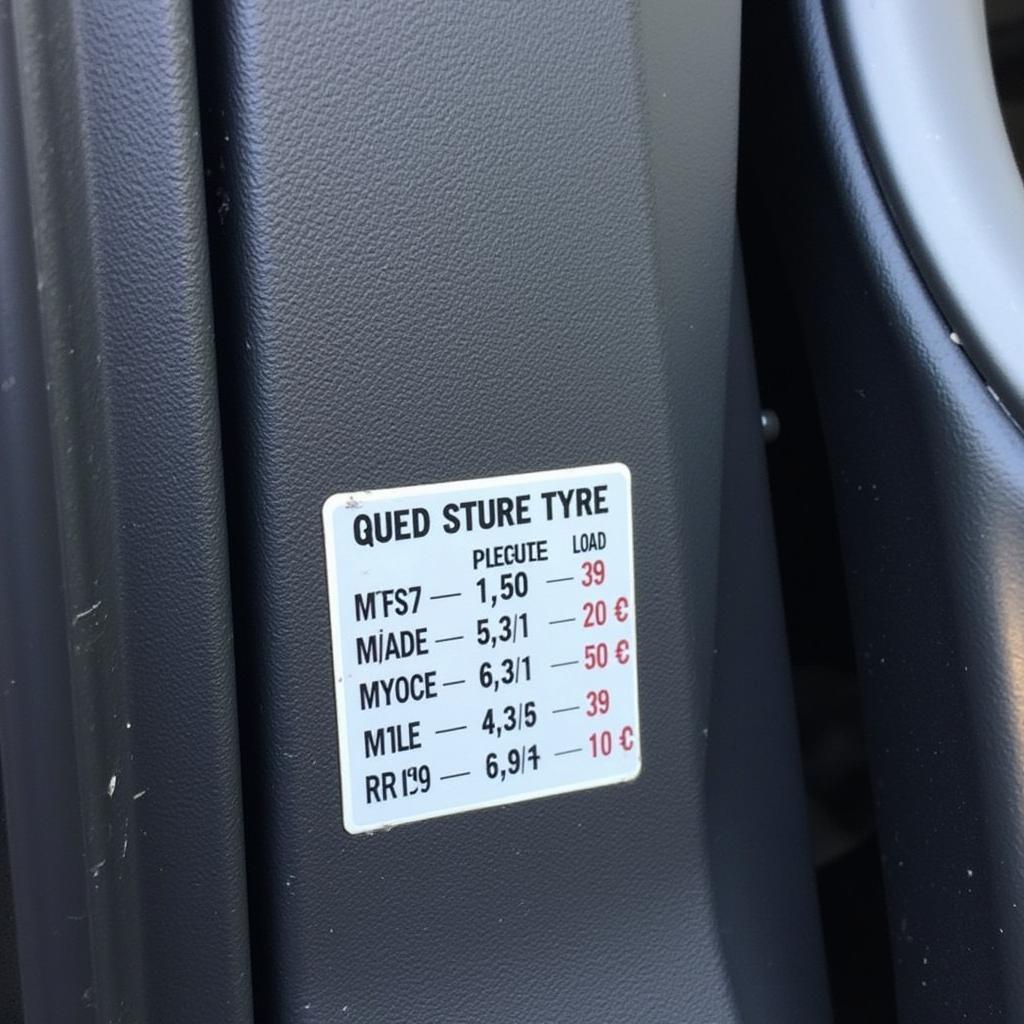One of the most frustrating experiences for a Seat Ibiza owner is seeing the dreaded tyre pressure warning light illuminate on the dashboard. This amber symbol, often depicting a tire cross-section with an exclamation mark, signals a potential issue with one or more of your tyres. But don’t panic! This guide will walk you through the common causes, troubleshooting steps, and solutions to get you back on the road safely.
Understanding Your Seat Ibiza Tyre Pressure Monitoring System
Modern Seat Ibiza models are equipped with a Tyre Pressure Monitoring System (TPMS). This sophisticated system constantly monitors the air pressure in each tyre, alerting you immediately if there’s a significant deviation from the recommended pressure.
There are two main types of TPMS:
- Direct TPMS: Uses sensors located within each wheel to directly measure tyre pressure.
- Indirect TPMS: Calculates tyre pressure by monitoring wheel speed sensors.
Your Seat Ibiza owner’s manual will specify which system your car uses. Understanding this is crucial for accurate troubleshooting.
Common Causes of the Tyre Pressure Warning Light
While a genuine tyre pressure issue is the most common culprit, several other factors can trigger the warning light in your Seat Ibiza:
- Underinflated Tyres: The most common cause. Even a slight drop in pressure can trigger the warning.
- Overinflated Tyres: Equally important to address, as overinflation can lead to uneven wear and handling issues.
- Temperature Changes: Sudden shifts in ambient temperature, especially during colder months, can cause tyre pressure fluctuations.
- Slow Puncture: A small nail or sharp object lodged in the tyre can lead to a slow leak, gradually decreasing pressure over time.
- Faulty TPMS Sensor: In some cases, a malfunctioning sensor can send inaccurate readings, triggering the warning light even with correct tyre pressure.
- TPMS Battery Issues: TPMS sensors are battery-powered. As these batteries age, they can lose effectiveness, leading to inaccurate readings or system malfunctions.
- Recent Tyre Change or Rotation: If you’ve recently changed or rotated your tyres, the TPMS system might need to be reset.
Troubleshooting the Tyre Pressure Warning Light
Before you head to a garage, here’s a step-by-step guide to help you troubleshoot the issue:
- Check Your Tyre Pressure: Find the recommended tyre pressure for your Seat Ibiza (usually located on a sticker inside the driver’s side door jamb or in the owner’s manual). Use a reliable tyre pressure gauge to check each tyre, including the spare.
- Adjust Tyre Pressure as Needed: Inflate or deflate your tyres to match the recommended pressure.
- Inspect Your Tyres: Carefully examine each tyre for signs of punctures, cuts, bulges, or uneven wear. Pay attention to the sidewalls as well.
- Reset the TPMS: Consult your owner’s manual for the specific procedure to reset your Seat Ibiza’s TPMS. This usually involves driving for a short distance at a specific speed.
 Checking Seat Ibiza Tyre Pressure
Checking Seat Ibiza Tyre Pressure
When to Seek Professional Help
If the warning light persists after following the troubleshooting steps, it’s best to consult a qualified mechanic specializing in Seat vehicles.
Here are some situations that warrant professional attention:
- Persistent Warning Light: If the light stays on or reappears after resetting the TPMS.
- Suspected TPMS Fault: If you suspect a faulty sensor or battery issue within the TPMS system.
- Unable to Locate the Cause: If you’ve checked the tyre pressure and inspected the tyres thoroughly but can’t find a reason for the warning.
Tips for Maintaining Proper Tyre Pressure
Maintaining correct tyre pressure is crucial for safety, fuel efficiency, and tyre longevity. Here are some tips:
- Check Regularly: Make it a habit to check your tyre pressure at least once a month and before long journeys.
- Consider Temperature Fluctuations: Remember that tyre pressure decreases in colder temperatures and increases in warmer temperatures.
- Use a Quality Gauge: Invest in a reliable tyre pressure gauge to ensure accurate readings.
- Don’t Forget the Spare: Remember to check and maintain the pressure in your spare tyre as well.
 Seat Ibiza Tyre Pressure Sticker
Seat Ibiza Tyre Pressure Sticker
Conclusion
The tyre pressure warning light in your Seat Ibiza is a crucial safety feature, alerting you to potential issues that could affect your car’s handling and performance. By understanding the common causes, following the troubleshooting steps, and knowing when to seek professional help, you can ensure a safe and enjoyable driving experience. Remember, maintaining correct tyre pressure is not just about avoiding a warning light; it’s about prioritizing your safety and the longevity of your vehicle.

